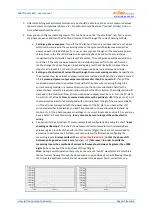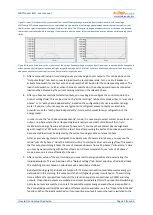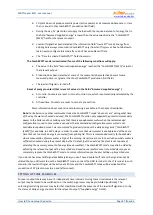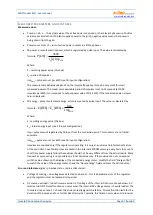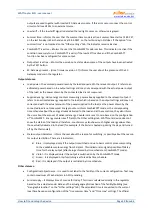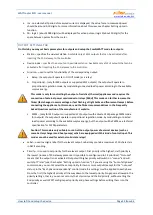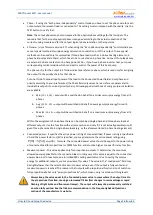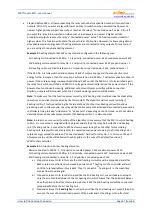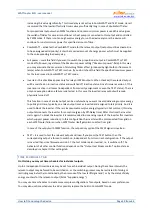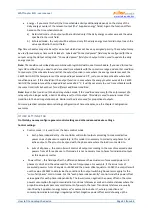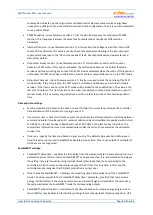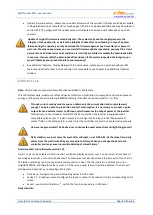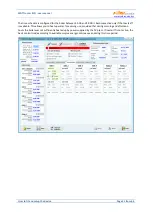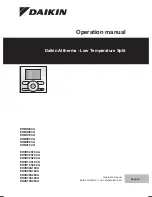
WATTrouter ECO - user manual
www.solarcontrols.cz
How to fit and setup the device
Page 37 from 66
Prepend before SSRs – allows prepending the relay output before specified number of proportional
outputs. Fill in 1 if you want a relay with lower priority to switch on when assumed load power on
nearest higher priority proportional output reaches the relay's “Connected power” value. Fill in 2 if
you want this relay to be switched on when sum of load powers on nearest 2 higher priority
proportional outputs reaches the relay's “Connected power” value. The function works similar for
higher values. This function will violate the preset order of priorities. However, it allows using almost
all available surplus energy even if heating elements are connected to relay outputs. For example, if
you are using a three-phase heating element.
Example 1:
heating element 3x2 kW connected and configured in the following way:
- 1st heating coil connected to SSR No. 1, 1st priority, connected power 2 kW, maximum power 2 kW
- 2nd heating coil connected to relay No. 1, 2nd priority, connected power 2 kW, prepend value = 1
- 3rd heating coil connected to relay No.2, 3rd priority, connected power 2 kW, prepend value = 1
If the SSR No. 1 is fully switched and consumes 2 kW of surplus energy and the amount of surplus
energy further increases, then the relay No. 1 will switch on and SSR No. 1 will automatically reduce its
power. If the surplus energy increases by additional 2 kW so that the SSR No. 1 is fully switched again,
the relay No. 2 will be switched and SSR No. 1 will again automatically reduce the power output. If the
power output continues increasing, additional outputs with lower priorities will be connected.
Similarly, outputs will disconnect when the PV-plant power generation will decrease.
Note:
To make sure that the function works correctly, all 3 heating coils must be active (heated) at the
same time or inactive (disconnected by the thermostat). The algorithm will not work correctly if
heating coil No. 1 is disconnected by the thermostat and the other two heating coils will continue
producing heat. In this scenario, the relay will be continuously connected and disconnected because the
controller is trying to keep "virtual zero" or "phase zero", depending on control mode, and is not able to
determine from phase wire measurements that heating coil No. 1 is disconnected.
Note:
In order to ensure correct function of the algorithm it is necessary that the SSR - to which heating
coil No. 1 is connected, is assigned with the higher priority than the relay No.1 with the 2nd heating
coil. If heating coil No. 1 connected to SSR has lower power rating than the other two remaining
heating coils, relays will connect only after the overall power (power drawn by the first heating coil +
surplus energy) exceeds the value of "Connected power" field set for relay No. 1. In this case, the part
of surplus energy will be still delivered to public grid as in the case of the default function of
WATTrouter controller.
Example 2:
A boiler and 2 other heating elements:
- Boiler connected to SSR No. 1, 1st priority, connected power 2 kW, maximum power 2 kW,
- 1st heating coil connected to SSR No. 2, 2nd priority, connected power 2 kW, maximum power 2 kW,
- 2nd heating coil connected to relay No. 1, 3rd priority, connected power 2 kW,
a)
Prepend value set to
0
: In this case the 2nd heating coil will never be prepended and after
4kW surplus is reached and consumed by boiler and 1
st
heating coil the controller will wait
until the total available surplus is 6kW. Then it connects 2
nd
heating coil. In the meantime
surplus flows to public grid.
b)
Prepend value set to
1
: In order to prioritize the 2nd heating coil, we will take into account
only the assumed load power of the 1st heating coil, which means that the boiler will always
have first priority. So after total surplus reaches 4 kW the 2nd heating coil will be connected
(prepended) before the 1st heating coil.
c)
Prepend value set to
2 and higher
: In order to prioritize the 2nd heating coil, we will take into
account the sum of assumed load powers of the boiler and 1st heating coil. So after total


